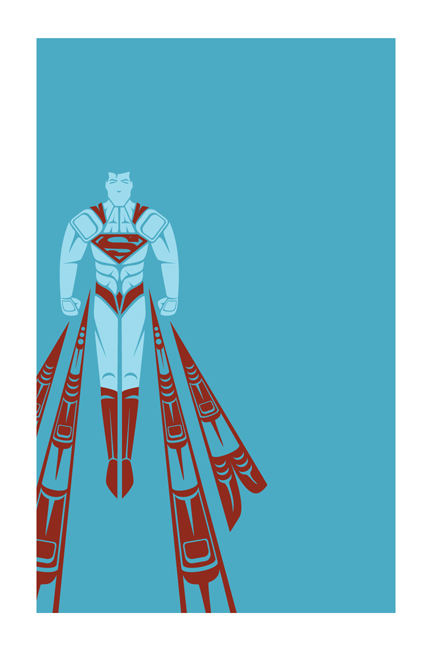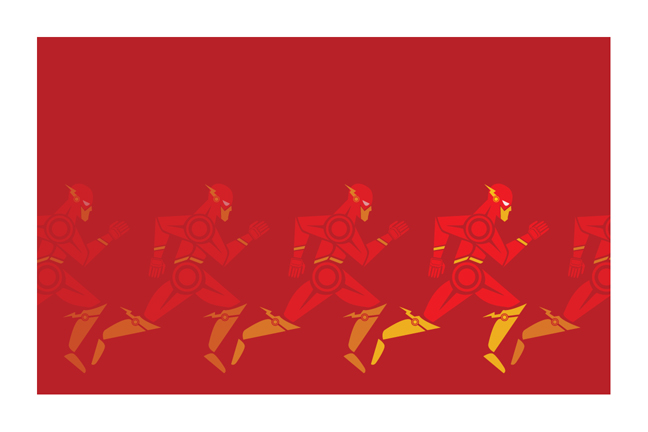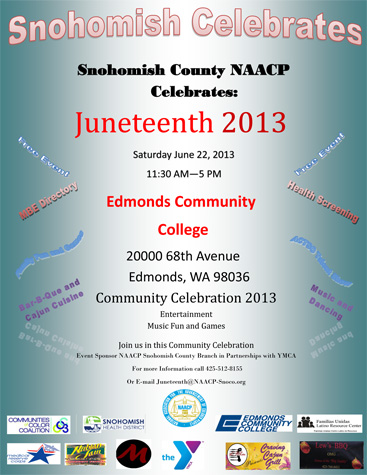Native artist Jeffrey Veregge embraces his nerdiness
Monica Brown, TulalipNews
 Jeffrey Veregge, a Port Gamble S’Klallam tribal member, has been creating art for most of his life. A few years ago, after exploring different art techniques, Jeffrey decided to mix two art forms he admires most, Salish form line with comic book super heroes and Sci-Fi. “I took what I like of Salish form line design, the elements and the spirit of it and decided to mix it with what I do as an artist and put my own take on it,” said Jeffrey about his latest art pieces.
Jeffrey Veregge, a Port Gamble S’Klallam tribal member, has been creating art for most of his life. A few years ago, after exploring different art techniques, Jeffrey decided to mix two art forms he admires most, Salish form line with comic book super heroes and Sci-Fi. “I took what I like of Salish form line design, the elements and the spirit of it and decided to mix it with what I do as an artist and put my own take on it,” said Jeffrey about his latest art pieces.
His earlier work had a Picasso-esque theme that centered on native images. “I love cubist art. I like that it is messy but to be honest my heart wasn’t behind it [his earlier work], it wasn’t a true reflection of me,” explained Jeffrey. After taking a yearlong break to learn how to accept his nerd side, Jeffrey began to embrace his love of comic books, action figures and science fiction by recreating his favorite characters in the Salish design.
“Salish form line is beautiful and this felt like a natural extension. Comic books, Star Wars and all this stuff are equivalent to modern day myths and Salish art tells stories and myths,” said Jeffrey.
The sleek lines of the Salish design applied to superheroes such as Batman and Spiderman give them a solid and defined silhouette against a simple background. Because the placing of empty space against the background and the color contrast are both well thought out, the figures convey a sense of power and motion to the viewer. “I want to represent the comic characters in a good and noble way which they were intended,” said Jeffrey.

Courtesy of Jeffrey Veregge
Jeffrey is surprised and grateful for the success of his art, “A lot of native comic fans have approached me; a lot of support and wonderful emails, along with school programs asking for me to come show my work to inspire the students,” said Jeffrey. With the support from the fans he intends to recreate many more comic and Sci-Fi characters. Currently in the works are Iron man and possibly Deapool. Jeffrey is also organizing his attendance to the Tacoma Jet City Comic Show this November, where he will have a booth and be doing an exclusive print for the show and to Seattle’s Emerald City Comicon March 2014.
Jeffrey studied Industrial Design at Seattle’s Art institute and the Salish form line from Master Carver David Boxley, a Tsimshian native from Metlakatla, Alaska. Prints are available for purchase through his website, jeffreyveregge.com . T-shirt designs and baseball hats will be available for purchase soon.
His art can be seen at, In the Spirit: Contemporary Northwest Native Arts Exhibit located in Tacoma, at the LTD Art Gallery in Seattle, The Burke Museum and The Washington State History Museum. Other recent art commissions include a piece commissioned for the Tulalip Youth Center for their Suicide prevention campaign, a Steer Clear campaign with the Northwest Portland Area Indian Health Board and a double sided mural in Edmonton, Alberta.
For more information please visit jeffreyveregge.com

Courtesy of Jeffrey Veregge









